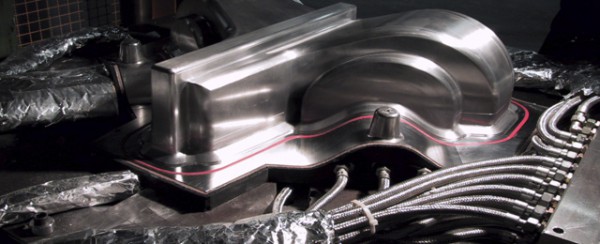Carbon fibre / Glass fibre-reinforced
plastics, We shape fibres

The RTM-Technology is the preferred technique for manufacturing components that are exposed to heavy structural stresses or to meet special requirements in terms of shape, temperature, dimensional accuracy, weight and stability.
Economic efficiency, serial production, light-weight construction and functional integration are other crucial benefits of this technology which we recognized very early and started an industry for the serial production of CRP/GRP-components.
Partly automated processes with modern RTM-injection systems guarantee reproducible prime quality and facilitate cycle times that allow serial production with annual batch sizes of up to 10,000 units.
We exclusively process high quality polyester and epoxy resins with reinforcing fibres made of carbon, glass or aramid. RheinComposite has several RTM-plants and press lines for production of larger series.
We master the entire RTM Technological range, whether Class A-surfaces or resistance to chemicals, - Challenge us -.
The RTM-process, “Resin-Transfer-Moulding” or “Harzinjektionsverfahren” as is called in German is a processing technology to produce fibre reinforced composites (FRP).
Carbon, glass and aramid fibres are the most well known reinforcing fibres, which are impregnated with a matrix system (Resin-hardener mixture) and processed to produce components.
In the RTM-process the semi-finished fibres are either directly or in the form of a preform placed into a mould comprising a lower and an upper half. After the mould is closed the matrix system is injected into the mould cavity using an injection moulding machine at pressures of up to 35 bar. The hardening starts instantly within the heated mould.
As the component is produced and hardened in a closed mould, the component has smooth surfaces on either sides, consistent wall thickness and fibre volume content in addition to dimensional accuracy.
Thus this technology is most suited for production of components that are exposed to heavy structural stresses or need to meet special requirements in terms of dimensional accuracy, stability and reproducibility.
The option of having a partial automation and full automation makes this process a unique production technology suitable for serial production of complex, three-dimensional and continuous fibre-reinforced components.